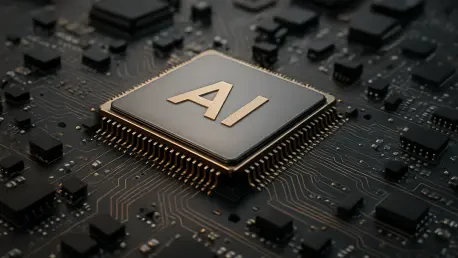Diving into the rapidly evolving world of data center technology, I’m thrilled to sit down with Matilda Bailey, a networking specialist with deep expertise in cutting-edge cellular, wireless, and next-gen solutions. With Qualcomm’s recent announcement of their entry into the data center AI chip market, challenging giants like Nvidia and AMD, Matilda offers a unique perspective on how this move could reshape the landscape of AI hardware and infrastructure. In our conversation, we explore what’s driving Qualcomm’s bold pivot, the innovative features of their new AI chips, their focus on inference over training, and the broader implications for efficiency and scalability in data centers.
How do you see Qualcomm’s shift from mobile and wireless chips to the data center AI market, and what might have motivated this significant pivot?
Qualcomm’s move into the data center AI chip market is a fascinating strategic leap. Historically, they’ve been a powerhouse in mobile and wireless tech, so this shift signals a response to the explosive growth in AI demand. I think they’ve been motivated by the massive projected growth of the AI data center market—expected to jump from $236 billion in 2025 to over $933 billion by 2030. They likely saw an opportunity to leverage their expertise in efficient, low-power architectures from mobile devices and apply it to AI workloads, especially inference, where there’s a growing need for cost-effective solutions. It’s also a chance for them to diversify their portfolio and tap into a lucrative space dominated by a few big players.
What stands out to you about the design of Qualcomm’s AI200 and AI250 chips compared to existing solutions in the market?
What’s really intriguing about the AI200 and AI250 chips is their focus on a new memory architecture tailored for AI inference. By integrating Oryon CPUs, Hexagon NPU acceleration, and LPDDR memory, Qualcomm is aiming for a highly efficient design that prioritizes performance-per-watt. Unlike traditional GPU-heavy setups, this combination could reduce latency and power consumption, which are critical for inference tasks. Their emphasis on liquid cooling and scaling over PCIe and Ethernet also suggests they’re building for dense, high-performance rack-scale systems, which could be a game-changer for data centers looking to optimize space and energy.
Why do you think Qualcomm has chosen to target AI inference specifically, rather than diving into the training side of AI workloads?
Focusing on inference makes a lot of sense for Qualcomm right now. Training workloads, where Nvidia currently dominates, require massive computational power and are often handled by specialized GPUs. Inference, on the other hand, is about deploying already trained models for real-time decision-making, and it’s a growing segment as more businesses adopt AI applications. Qualcomm likely sees this as a sweet spot where their expertise in efficient, edge-based processing can shine. Plus, with the inference market poised for rapid growth, they’re positioning themselves to capture a significant share before it becomes as saturated as the training space.
Can you unpack the concept of ‘rack-scale AI performance-per-watt’ that Qualcomm is emphasizing, and why it matters for data centers?
Rack-scale AI performance-per-watt is all about maximizing the computational output you get for every watt of power consumed across an entire rack of servers. It’s a critical metric as data centers face skyrocketing energy costs and sustainability pressures. Qualcomm’s focus here suggests their chips are designed to deliver high AI inference performance while minimizing power draw, which could translate to substantial cost savings for operators. In a market where efficiency can be a competitive edge, this approach could set them apart from rivals who might prioritize raw performance over energy optimization.
With Qualcomm outlining a multi-generational roadmap for their data center AI chips, what do you think they’re aiming to achieve in the long term?
A multi-generational roadmap indicates Qualcomm is in this for the long haul, not just a one-off product launch. I believe they’re aiming to iteratively improve their chips’ performance and efficiency, likely targeting tighter integration with data center architectures and broader compatibility with AI workloads over time. This roadmap probably includes milestones like enhanced software support, better scalability for larger deployments, and possibly even branching into adjacent areas like enterprise solutions. It’s a signal they want to build trust and reliability in this space, encouraging early adopters to commit to their ecosystem.
How do you see Qualcomm’s AI software stack supporting developers and enterprises in adopting these new chips?
Qualcomm’s AI software stack seems to be a key piece of their strategy to ease adoption. From what I understand, it’s built to work with popular machine learning frameworks and inference engines, which lowers the barrier for developers already familiar with these tools. It also includes optimization techniques like disaggregated serving, which can help enterprises scale their AI models efficiently. By fostering an open ecosystem, Qualcomm is making it simpler for businesses to integrate and manage trained models on their hardware, which could accelerate deployment in real-world applications and make their chips more attractive to a wide range of users.
Looking ahead, what’s your forecast for the role of inference-focused solutions in the data center AI market over the next decade?
I think inference-focused solutions are going to play an increasingly central role in the data center AI market over the next decade. As more industries—from healthcare to retail—integrate AI into their operations, the demand for real-time processing of trained models will skyrocket. Unlike training, which often happens in bursts, inference is a constant need, and optimizing for it can drive significant cost and energy savings. I foresee a shift where data centers balance training and inference workloads more evenly, with companies like Qualcomm leading the charge in creating specialized, efficient hardware for inference. We might also see hybrid architectures emerge, where inference chips work alongside training GPUs, creating a more dynamic and flexible AI ecosystem.









